Blue Helix |
|||||||||||||||||||||||||||||||||||||
 |
 |
||||||||||||||||||||||||||||||||||||
Circle crocheted jacket in 1 strand DROPS Nord + 1 strand DROPS Kid-Silk. Piece is worked with lace pattern. Size: S - XXXL
DROPS 194-36 |
|||||||||||||||||||||||||||||||||||||
|
EXPLANATION FOR THE PATTERN: ---------------------------------------------------------- PATTERN: See diagrams A.1 to A.3. CROCHET INFO-1: Replace first double crochet at beginning of round with 1 chain stitch, finish round with 1 slip stitch in 1st chain stitch at beginning of round. Replace first treble crochet at beginning of round with 3 chain stitches, finish round with 1 slip stitch in 3rd chain stitch at beginning of round. Replace first double treble crochet at beginning of round with 4 chain stitches, finish round with 1 slip stitch in 4th chain stitch at beginning of round. CROCHET INFO-2 (transition to next round): Work slip stitches to first stitch on next round. If there is a chain space on last round work chain stitches until middle of first chain space on round. NOTE: Applies from the end of 3rd round in A.1 and until finished measurements. INCREASE TIP: Increase 1 chain space as follows: Work * 1 double crochet + 1 chain space *, work from *-* 2 times in total around same chain space. DECREASE TIP (applies to sleeves): NOTE: Pattern displaces the beginning of round, therefore adjust so that the 2 decreases are done mid under sleeve. Decrease 1 chain space as follows: Work 1 double crochet around chain space, 1 double crochet around next chain space, 6 chain stitches. ---------------------------------------------------------- START THE PIECE HERE: ---------------------------------------------------------- JACKET - SHORT OVERVIEW OF THE PIECE: Work piece in the round in a circle from mid back of back and outwards. Work armholes on the circle. Work front pieces back and forth and then work a finishing edge around the entire circle. Work sleeves in the round, top down. CIRCLE: Work 4 chain stitches on hook size 5 mm with 1 strand Nord + 1 strand Kid-Silk (= 2 strands) and form a ring with 1 slip stitch in first chain stitch made. Then work pattern in the round according to diagram A.1 7 times in total on round - read CROCHET INFO-1 and CROCHET INFO-2. REMEMBER THE CROCHET TENSION! When A.1 has been worked vertically, there are 49 chain spaces on last round. The circle measures approx. 34 cm in diameter. Cut the yarn, and begin next round in 4th chain space = mid back/neck. Now continue in the different sizes as follows: SIZE S-M: = 49 chain spaces. Work first round in A.2 - AT THE SAME TIME work armholes as follows: Work around each of the first 7 chain spaces, work 35 loose chain stitches (= armhole), skip 8 chain spaces, work around each of the next 19 chain spaces, work 35 loose chain stitches (= armhole), skip 8 chain spaces, work around each of the last 7 chain spaces. Repeat 2nd round in A.2 - AT THE SAME TIME increase - read INCREASE TIP, as follows: Work around each of the first 7 chain spaces - increase 2 chain spaces over these chain spaces, work 10 chain spaces/double crochets around armhole (= 2 increases), work around each of the next 19 chain spaces - increase 7 chain spaces over these chain spaces, work 10 chain spaces/double crochets around armhole (= 2 increases), work around each of the last 7 chain spaces - increase 2 chain spaces over these chain spaces (= 15 increases in total on round) = 64 chain spaces. Then work 3rd round in A.2 without increasing. The circle measures approx. 45 cm in diameter. SIZE L/XL - XXL/XXXL: = 49 chain spaces. Work first round in A.2 - AT THE SAME TIME increase 15 chain spaces evenly (i.e. increase 1 chain space over approx. every 3rd chain space) - read INCREASE TIP = 64 chain spaces. Work second round in A.2 - AT THE SAME TIME work armholes as follows: Work around each of the first 8 chain spaces, work 38-41 loose chain stitches (= armhole), skip 9 chain spaces, work around each of the next 30 chain spaces, work 38-41 loose chain stitches (= armhole), skip 9 chain spaces, work around each of the last 8 chain spaces. Then work 3rd round in A.2 without increasing. The circle measures approx. 45 cm in diameter. ALL SIZES: = 64 chain spaces for all sizes Then work diagram A.3 in the round, work A.3 5-6-7 times in total vertically - AT THE SAME TIME increase on round marked with arrow in diagram - remember INCREASE TIP, as follows: Increase 16 chain spaces on every round with increase, i.e. 1ST TIME: Increase 1 chain space around every 4th chain space = 80 chain spaces. 2ND TIME: Increase 1 chain space around every 5th chain space = 96 chain spaces. 3RD TIME: Increase 1 chain space around every 6th chain space = 112 chain spaces. 4TH TIME: Increase 1 chain space around every 7th chain space = 128 chain spaces. 5TH TIME: Increase 1 chain space around every 8th chain space = 144 chain spaces. Now continue in the different sizes as follows: SIZE S-M: Fasten off. The circle measures approx. 100 cm in diameter. SIZE L/XL: 6TH TIME: Increase 1 chain space around every 9th chain space = 160 chain spaces. Fasten off. The circle measures approx. 111 cm in diameter. SIZE XXL/XXXL 6TH TIME: Increase 1 chain space around every 9th chain space = 160 chain spaces. 7TH TIME: Increase 1 chain space around every 10th chain space = 176 chain spaces. Fasten off. The circle measures approx. 122 cm in diameter. ALL SIZES: = 144-160-176 chain spaces. Continue working only over 40-44-47 chain spaces in each side – i.e. do not work over 32-36-40 chain spaces at the top by neck and 32-36-42 chain spaces at bottom of back. Continue with explanation under left front piece. LEFT FRONT PIECE: = 40-44-47 chain spaces. Continue back and forth as follows: ROW 1: Work slip stitches until middle of the first chain space, 1 double crochet, * work 6 chain stitches, 1 double crochet around next chain space *, repeat from *-* and finish with 1 double crochet around last chain space = 39-43-46 chain spaces. Repeat 1st row 3-3-7 more times. There are 36-40-39 chain spaces at the edge of front piece. Cut the yarn. RIGHT FRONT PIECE: Work same way as on left front piece over 40-44-47 chain spaces in the right side. Fasten off. FINISHING EDGE: Work an edge around the entire circle as follows: Work last round in A.3, i.e. over every chain space work 1 double crochet and 3 chain stitches. Then work 1st round in A.3, i.e. work 3 double treble crochet around every chain space. Fasten off. Piece measures approx. 104-115-126 cm in diameter vertically and approx. 114-126-146 cm in diameter in width. SLEEVE: Work sleeve in the round from armhole. Begin mid under sleeve and work 57-63-66 double treble crochets evenly around armhole (= approx. 3 double treble crochets around every chain space) = 1st round in A.3. Continue in the round on A.3 to and with last round. Then repeat A.3 vertically - AT THE SAME TIME decrease 2 chain spaces mid under sleeve, decrease on round marked with arrow in diagram - read DECREASE TIP. Decrease like this on every round marked with arrow 4-5-5 times in total = 11-11-12 chain spaces. Continue without decrease until sleeve measures approx. 42-44-46 cm - adjust to finish after a round with double treble crochets. Fasten off. Work the other sleeve the same way. |
|||||||||||||||||||||||||||||||||||||
Diagram explanations |
|||||||||||||||||||||||||||||||||||||
|
|||||||||||||||||||||||||||||||||||||
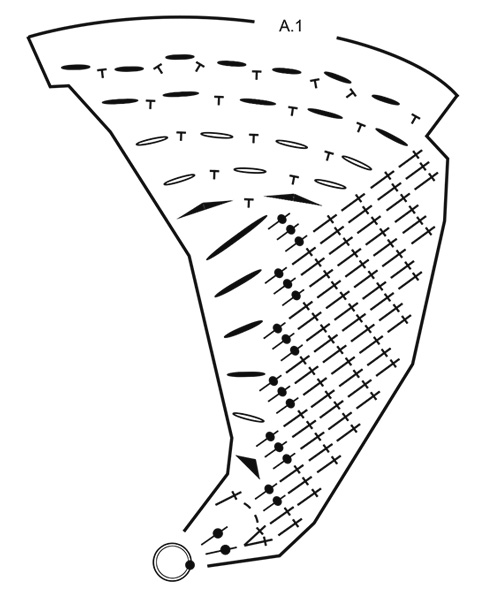
|
|||||||||||||||||||||||||||||||||||||
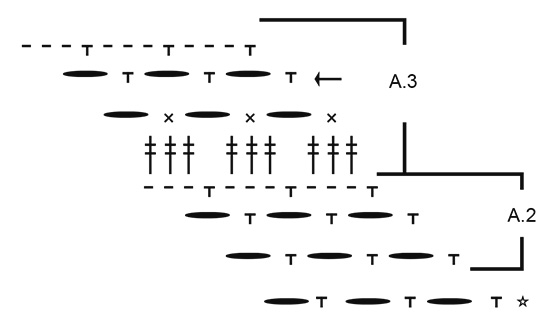
|
|||||||||||||||||||||||||||||||||||||
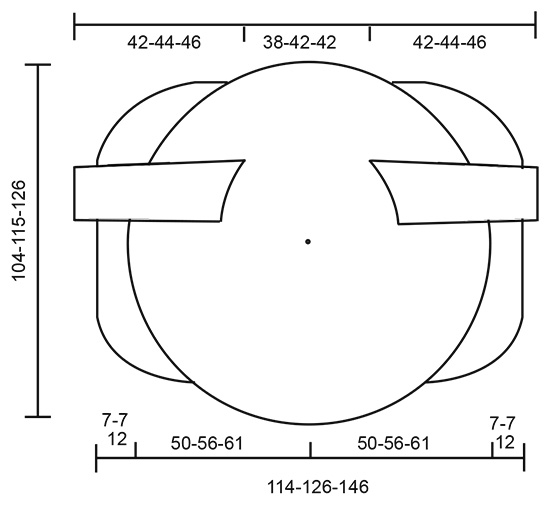
|
|||||||||||||||||||||||||||||||||||||
|
Have you made this or any other of our designs? Tag your pictures in social media with #dropsdesign so we can see them! Do you need help with this pattern?You'll find tutorial videos, a Comments/Questions area and more by visiting the pattern on garnstudio.com. © 1982-2024 DROPS Design A/S. We reserve all rights. This document, including all its sub-sections, has copyrights. Read more about what you can do with our patterns at the bottom of each pattern on our site. |
|||||||||||||||||||||||||||||||||||||











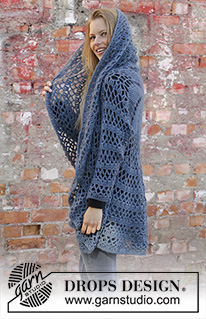
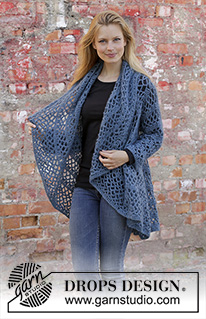

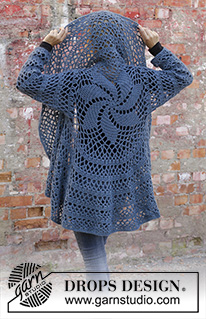


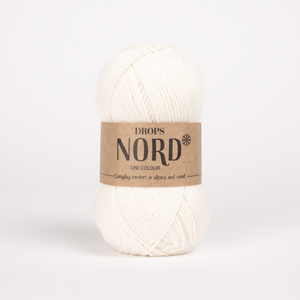
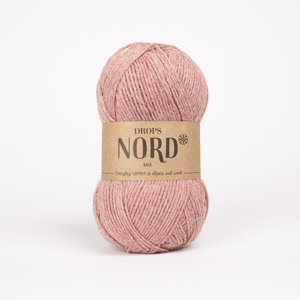








































Comments / Questions (79)
Welke dikte gebruikt u en als u de mouwgaten inhaakt gaat u dan verder met de losselussen op de mouwgaten ofd op de cirkel zelf??
23.02.2023 - 21:08In diagram A1 to make it work with the rest of the pattern when crocheting left handed (ie. Going round clock wise rather than anti clockwise) should I read the diagram right to left or left to right?
11.11.2022 - 01:30DROPS Design answered:
Hi Sarah, You will then need to work the diagram from left to right. Happy crafting!
11.11.2022 - 06:43I’m struggling with the third row of A2. The second row is a single crochet in the chain space, then chain 6, repeated the whole way around (64 spaces total). The third row is a single crochet in the chain space and then chain 3 the whole way around. So when I get through the third row it’s all bunched up. What am I doing wrong?
23.10.2022 - 05:12DROPS Design answered:
Dear Mandy, the chains in row 3 will look smaller than the chains in row 2, since it contains 3 less chain stitches. You can see the end result in the photo, in the row before the treble crochets. Also, make sure that the crochet gauge is still the same and not tighter. Happy crochetting!
23.10.2022 - 23:52All your patterns are neautiful, however, so hard to understand and to follow, even though I have been crocheting for over 20 years. It clumped into paragraphs instead of round 1, round 2, etc..like the universal model.. I am sure I am not the only one that said this...I read many comments on Youtube and here too. I gave up on trying to make this :-(
24.08.2022 - 15:29Beautiful pattern, just having a bit of a problem with the armholes. on the next round after the 41 chains, how many dc and chain stitches do i need in the 41 chains. i am crocheting with DK and a 4.5 crochet needle. how many chains can i use instead of the 41 as my daughter is a 3XL. i am doing it in black and it centre piece looks stunning. thanks for sharing this beautiful pattern. do you have more of these patterns for free downloading using motifs. enjoy your day/evening.
22.07.2022 - 12:53DROPS Design answered:
Dear Ansie, as long as you are keeping the gauge stated above, you should be able to use the instructions perfectly, even if the yarn is slightly differen. So 41 stitches should be enough for a 3XL size. For the armhole, you work 1 dc in uneven stitch numbers (1st, 3rd, 5th..) and 1 chain stitch in the even stitches (2nd, 4th, 6th). So, you should have 21dc and 20 chain stitches. Happy crocheting!
24.07.2022 - 19:02Hi Luv. I do not understand how to do the circle and the diagram. Please advise. Many thanks.
12.07.2022 - 16:39DROPS Design answered:
Dear Lil, the circle is worked based on diagram A.1. You can check how to read and understand crochet diagrams here: https://www.garnstudio.com/lesson.php?id=69&cid=19. For example, in the first round you work 14 dc (US)/tr (UK) in the magic loop. In the second round you work 2dc (US)/tr (UK) in one stitch, 2 chain stitches and 1 dc (US)/tr (UK) in the next stitch.
12.07.2022 - 17:25Hello! :) I have completed A2. Is the following A3 correct for the XXL size? The 1st Row of A3 is ......... 3 double-trebles in the 3-chain-space (no stitches between the groups of the 3 double-trebles ) and slip stitches again in the chain of 41 armhole stitches on all the A3 rows? When are the rest of the armhole stitches to be worked on? - while starting the sleeves? Thank you!
11.04.2022 - 22:34DROPS Design answered:
Dear Pree, after working the armhole, you need to work the 3rd round of A.2, without increasing (dc in the ch-6 space and ch-3). In the first round of A.3, you work 3 dtr in the ch-3 space. You should have 64 chain spaces before starting A.3, which include the chain stitches worked to make the armhole. When you work over the chain spaces, you work in the whole round, including over the armhole stitches. Happy crochetting!
12.04.2022 - 18:25Poi lavorare il 3° giro di A.2 senza aumenti. Il cerchio misura circa 45 cm di diametro.
09.01.2022 - 23:06DROPS Design answered:
Buonasera Raffaella, deve lavorare sulle catenelle che ha avviato. Buon lavoro!
11.01.2022 - 21:54Buongiorno, quando ho lavorato il giro con le catenelle per gli Scalfi, il giro dopo devo lavorare sulle catenelle o sugli archetti che ho saltato? E i giri successivi? Grazie
09.01.2022 - 17:09DROPS Design answered:
Buonasera Raffaella, a quale giro sta facendo riferimento? Buon lavoro!
09.01.2022 - 22:58Bonjour, Existe-t-il un tuto en vidéo pour ce modèle car je ne comprends pas comment placer les emmanchures. Merci d'avance pour votre réponse.
12.12.2021 - 17:44DROPS Design answered:
Bonjour Mme Saintillan, pour faire les emmanchures, on va crocheter des arceaux tout le tour, et en même temps sauter un certain nombre d'arceaux (7 en S/M, 9 en taille L/XL et XXL/XXXL) que l'on va remplacer par des chaînettes (on forme ainsi un trou entre le cercle et le tour suivant). Au tour suivant, on va crocheter tout le tour comme avant en suivant A.2 en crochetant dans les arceaux comme si on ne les avait pas faits et en augmentant en S/M (pas dans les autres tailles) ainsi on a bien 64 arceaux après ce tour. Bon crochet!
13.12.2021 - 10:00